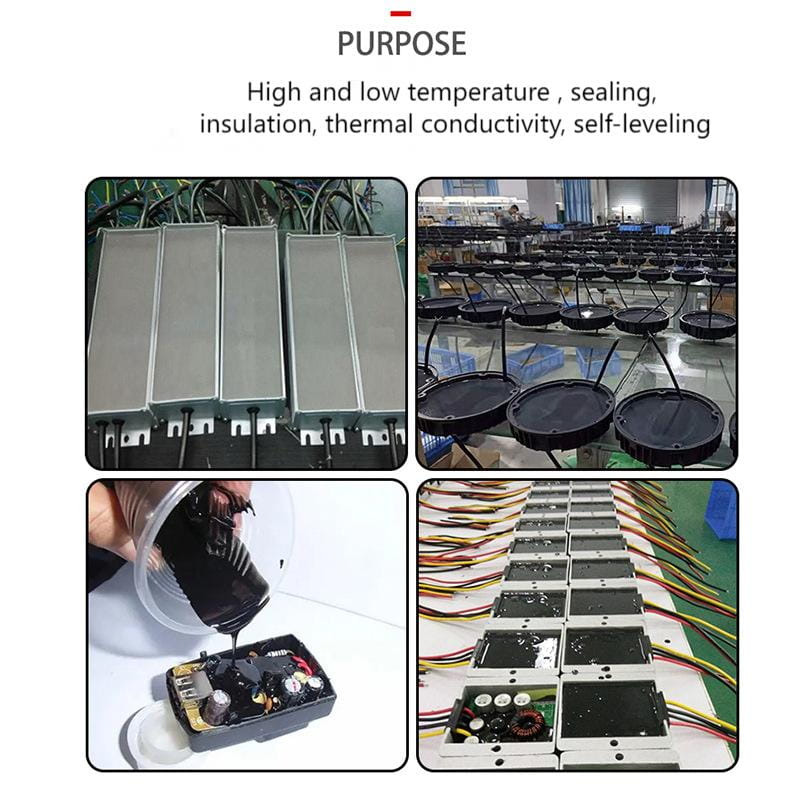Power ballasts in heat dissipation applications
If the heat generated by household appliances, kitchen appliances, and other electrical equipment during normal operation cannot be dissipated, it can lead to excessive junction temperatures, which can impact the product's lifespan, operational effici
 Apr 20,2024
Apr 20,2024 
How to use electronic encapsulant and points for attention during operation
There are many types of electronic encapsulants, and based on their material types, the most commonly used are epoxy resin encapsulants, silicone encapsulants, and polyurethane encapsulants. However, these three types alone can be further divided into hun
 Apr 12,2024
Apr 12,2024 
What are the performance criteria for thermal conductive silicone grease?
Thermal conductive silicone grease is a high-conductivity, insulating silicone material that never solidifies and can remain in a paste state for extended periods between -50°C and 200°C. It boasts excellent electrical insulation and thermal condu
 Apr 12,2024
Apr 12,2024 
What are the technical requirements for LED potting?
LED encapsulant is a type of auxiliary material for LED potting, featuring high transmittance, high refractive index, and good fluidity. It can protect LED chips, enhance light extraction efficiency, relieve stress, has low viscosity, is easy to defoam, s
 Apr 12,2024
Apr 12,2024 
What are the performance indicators of thermal conductive silicone grease
Thermal conductive silicone grease is a high thermal conductive insulating organic silicone material that rarely solidifies and can maintain its paste state when used for a long time at temperatures ranging from -50 ℃ to 200 ℃. It has excellent electr
 Apr 10,2024
Apr 10,2024 
Usage and operation precautions of electronic potting compounds
There are many types of electronic potting compounds, and according to the material type, the three most commonly used ones are currently epoxy resin potting adhesive, organic silicon potting adhesive, and polyurethane potting adhesive. However, thes
 Apr 10,2024
Apr 10,2024 
What are the factors that affect the curing speed of potting compound
Potting compounds are generally liquid or paste-like, and these adhesives need to be cured before they can exert their bonding effect during bonding. Therefore, the curing process of adhesives is also very important. If the curing is not good, the impact
 Apr 10,2024
Apr 10,2024 
The main characteristics of thermal conductive potting compound
Thermal conductive potting compound is a 1:1 two-component liquid electronic potting material with high thermal conductivity. The characteristic of thermal conductive potting adhesive is that it can cure at room temperature or heating. In addition to its
 Apr 10,2024
Apr 10,2024 
Reasons and solutions for foaming of epoxy resin potting glue
The curing of epoxy resin potting glue will produce bubbles to some extent unless the sealing operation is carried out in a vacuum environment. Therefore, in the process of sealing epoxy resin, we only try to reduce the amount of bubbles in the epoxy resi
 Apr 10,2024
Apr 10,2024 




 Home
Home









 You May Also Like
You May Also Like







 Tel
Tel
 Email
Email
 Address
Address












